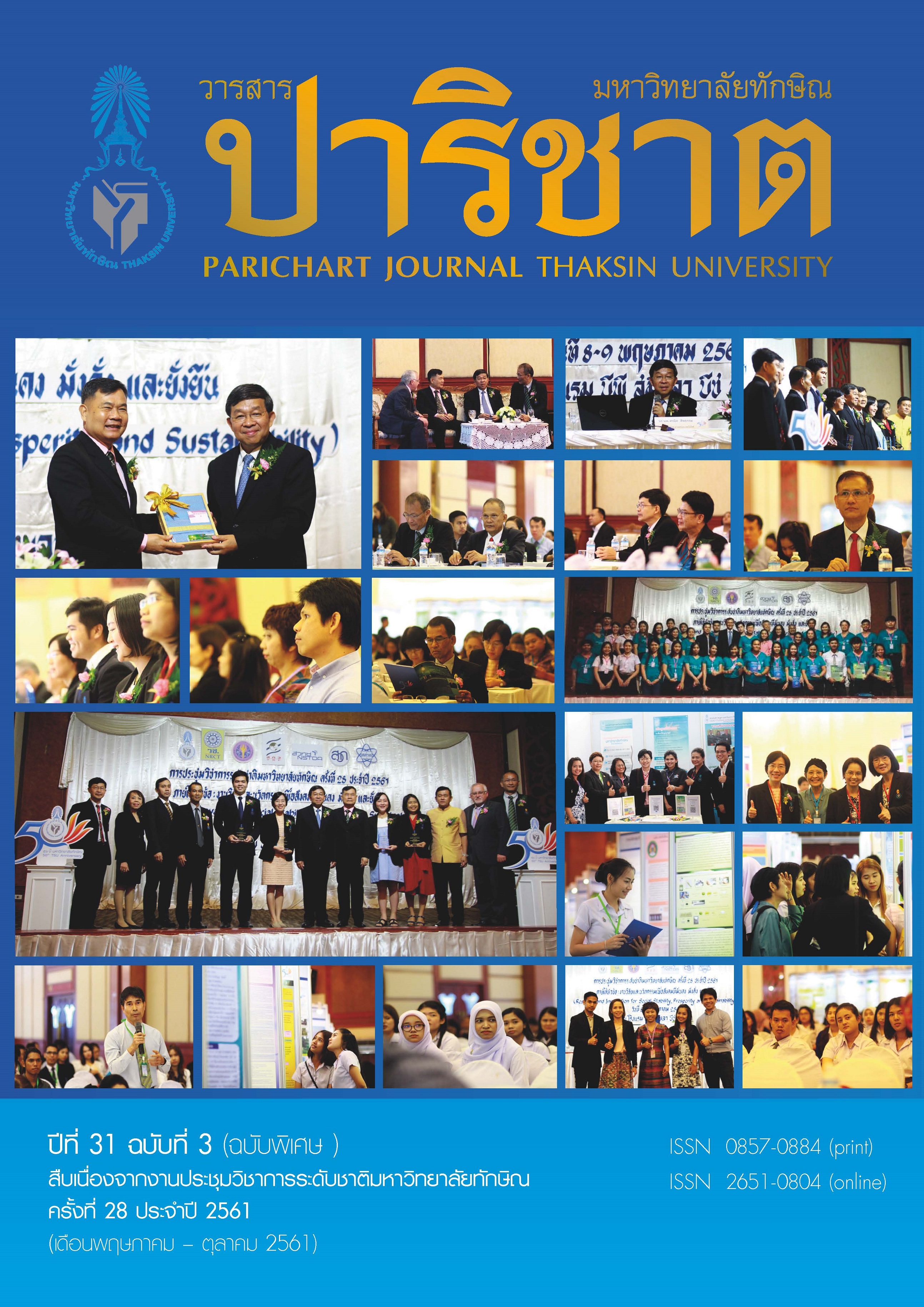The Study and Creation of Creative Drama Process to communicate with Autistic Students at the Institute for Special Education Songkhla Rajabhat University
Main Article Content
Abstract
The aim of this research was to study and create a Process of Creative Drama for autistic children
at the Institute for Special Education, at Songkhla Rajabhat University. The process involved 1) working
with three autistic children 2) to understand and develop their emotions and behavior and thus 3) to
encourage the development of happy life skills with the other people. The Process of Creative Drama
focused on making the autistic children familiar with the main activity, which was to learn the desired
behavior, from the song “Children with Special Need” by emulating the posture of the researcher.
Autistic children were the audience in the shadow puppet play called “The Broken Clay Pot.” The
purpose of the play was to get the audience to recognize their value, and their ability to help the others
such as helping friends to turn on/off the light, or clean up and similar acts. The researcher gained
insights on effectiveness by interviewing specialist teachers, teachers and parents of autistic children
twice. The first interview was conducted with six individuals before the Creative Drama Process. The
second interview was conducted with four individuals after the Creative Drama Process. The assessment
showed that the Process of Creative Drama could make autistic children recognize their value in helping
others. It is believed this was achieved because the children improved their problems of emotional and
behavioral conduct, resulting in their ability to help others with their limited capabilities.

